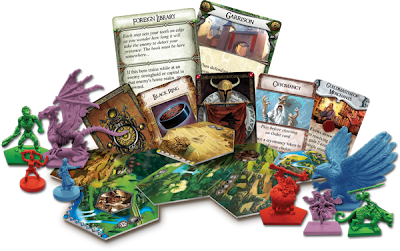If you were to sit down and play a game with me, the odds are pretty good that you’d learn something about my genetics. If said game had different colored pieces for each player, you’d notice that I tend to go for either black, white or something very prominent like yellow. The reason for this is because I suffer from deuteranomoly, commonly known as red-green color blindness. For me, colors like reds & greens or blues & purples have a tendency to blend together, making them tough to distinguish from one another. This can make some games frustrating to play if hues are too similar or if the lighting in our play area is too dim.
 |
| Left to Right – Original Image, Deuteranope (red-green) Simulation, Protanope (blue-yellow) Simulation |
Now, here’s an example. Most of you should be able to tell the difference in these images. I, on the other hand, have a hard time distinguishing the left and center images from each other at all and the rightmost image is just slightly different. As you can imagine, this kind of deficiency can throw a serious wrench in gaming since so many games rely on colorful iconography to relay important information.
In most cases, my red-green problem is just a minor inconvenience, but color blindness of any type presents a unique challenge for game designers and can become an issue for groups of players who have one or more color blind individuals among them. One of the best positive examples of this is theTicket to Ride by Days of Wonder.
 |
| A selection of components from the Runewars: Banner of War expansion |
This humble article could have easily turned into a discourse on ocular genetics. The subject is pretty fascinating, so here are just a few links to websites where you can learn more!

